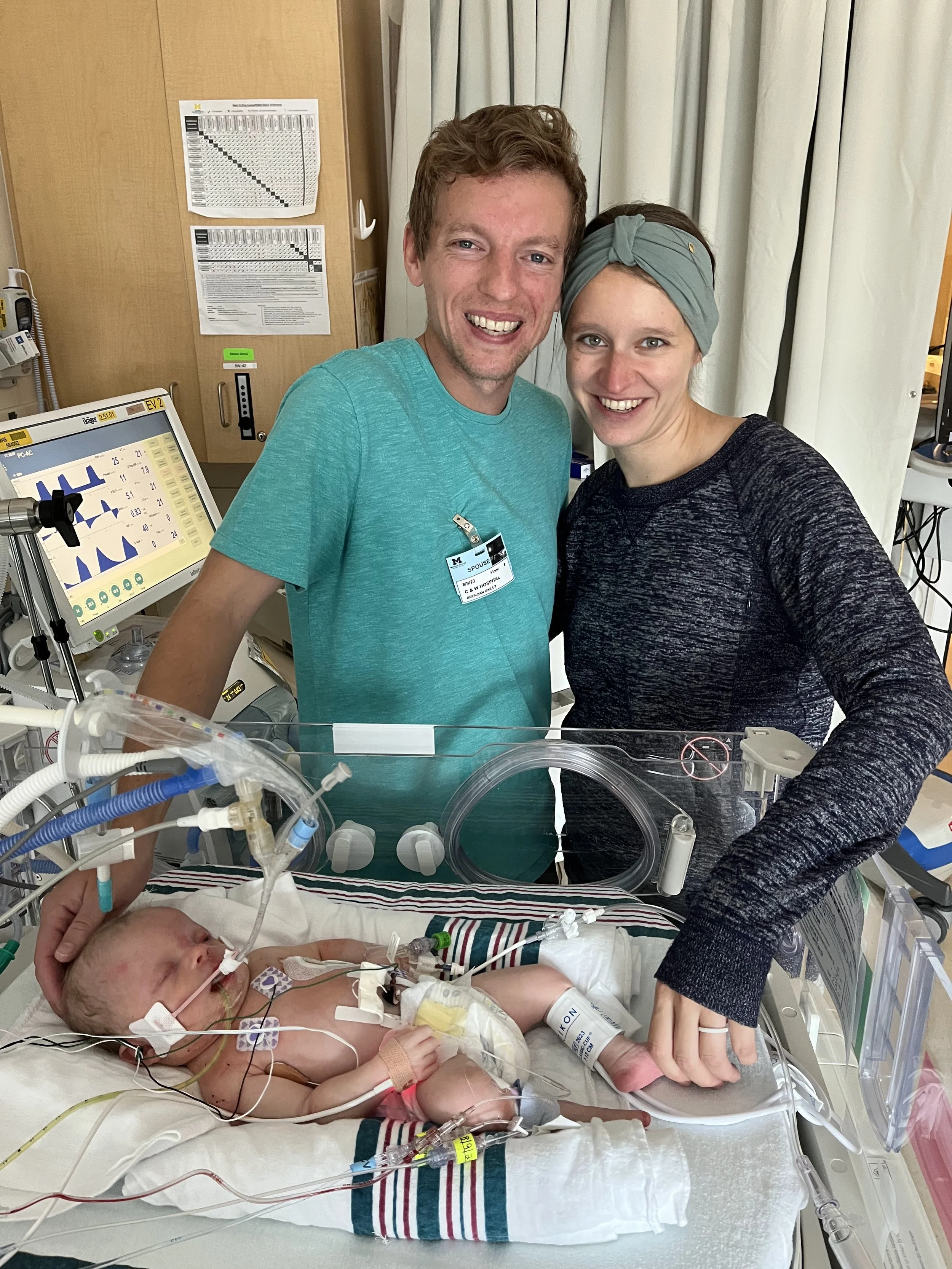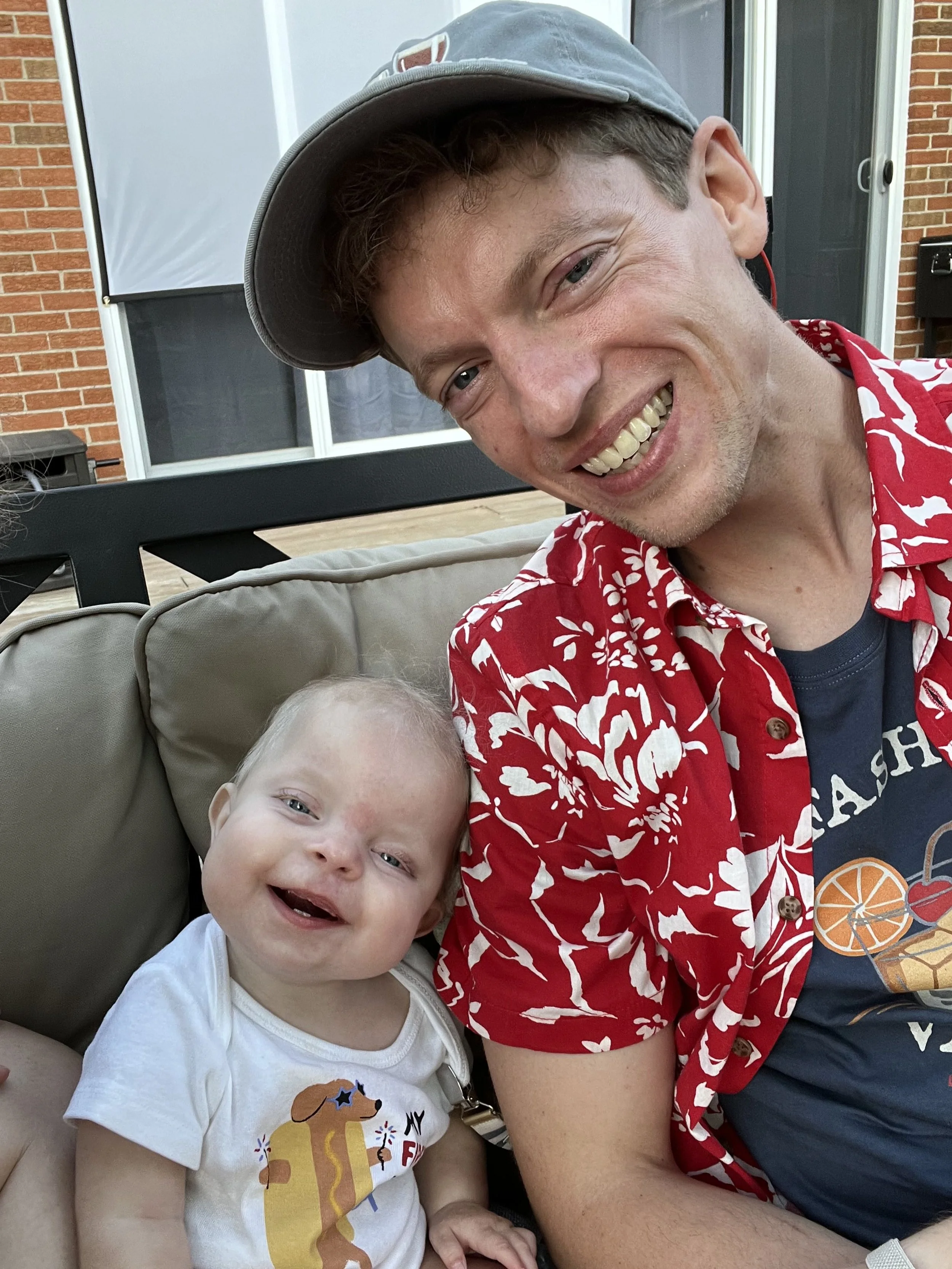Ellie’s CDH Story
In April 2023, our lives took an unexpected turn when we learned that our previously healthy, uneventful pregnancy actually had several congenital abnormalities. Our OB/GYN first noticed an issue at our 20-week anatomy scan, where he noted that Ellie's stomach was not in the correct position, and her heart was pushed too far to the right, making it difficult to get accurate images. We were sent to C.S. Mott Children's Hospital at the University of Michigan for follow-up scans, a fetal echocardiogram, and genetic testing. After three weeks of testing, we found out that Ellie had mild left-sided congenital diaphragmatic hernia (stomach, spleen, and some intestine up), a heart condition called Tetralogy of Fallot, and a genetic condition called Mosaic Trisomy 14.
Each of these conditions is serious on its own, but the combination of the three is novel in literature, so over the next 20 weeks, we worked with the doctors to plan for her arrival and handle unknowns as best as possible. We were induced at 38 weeks, and Ellie arrived on August 8, 2023, weighing 5lbs 13oz. Doctors warned us that she may not cry when she was born, but she let out the tiniest cry before being whisked away to be intubated, stabilized, and transferred to the NICU.
Ellie was thriving in the NICU, so her CDH surgeons decided to proceed with her surgery at 2 days old. This surgery was able to be completed laparoscopically, and it involved moving her stomach, spleen, and intestines back below the diaphragm, patching the hole in her diaphragm, and inserting a chest tube to allow for fluid drainage for her left lung to expand. When her surgery was completed, doctors were surprised to find that her stomach had migrated back down and that she had a good bit of left lung tucked away behind everything! Ellie recovered from surgery with no complications, and she spent 50 days overall in the NICU, weaning to minimal oxygen support and learning to eat.
Ellie continued to thrive at home while waiting for her heart surgery. Tetralogy of Fallot is a birth defect that is initially non-critical, but it is a progressive defect, so repair is often performed around 6 months of age. We continued to have regular echocardiograms to monitor her heart function, and she was finally brought in for surgery on March 1, 2024. This surgery involved widening the pulmonary artery to allow for better blood flow between the heart and lungs, patching a hole between the ventricles of her heart, and removing the pulmonary valve that controls blood flow to the lungs. Because Ellie's lungs were smaller than normal, her recovery from this surgery was slow, and she spent 18 days inpatient, allowing her lungs to recover and learn to breathe on their own again. Ellie took everything like a champ, and she was able to come home with no supplemental oxygen! Ellie's heart repair is stable, and she will not require any more major heart surgeries other than a catheter procedure in her early 20s to place a synthetic pulmonary valve.
Ellie’s genetic condition is a largely unknown diagnosis. Mosaic Trisomy 14 means that some of her cells (in her case, about 10%) have an extra copy of chromosome 14. There are only about 30 reported cases in literature, although there are thought to be close to 200 cases in the world. Common features of her condition include short stature, slow growth, and mild intellectual and physical delays. The affected cells tend to concentrate in certain areas of the body, and in Ellie’s case, her left side seems to be more affected. Her left arm and leg are slightly shorter than the right side, and she has severe left-sided torticollis (head tilt). Ellie is learning to adapt to her physical challenges, and she is able to sit unassisted, balance on her hands and knees, and is eagerly trying to both crawl and walk.
Just a year after she was born, Ellie’s daily life is pretty similar to the average baby. She goes to PT every week and OT for feeding therapy once a month, followed by our hospital’s CDH Clinic and pediatric cardiology clinic. Other than that, she loves spending time outside, swinging, reading, kicking everything in sight, and singing in the car. We wanted to write this story to give other families hope, especially those facing multiple diagnoses. CHD and genetic conditions on top of CDH can be complicated, but these babies are so strong. We are here to support everyone facing this scary diagnosis!








